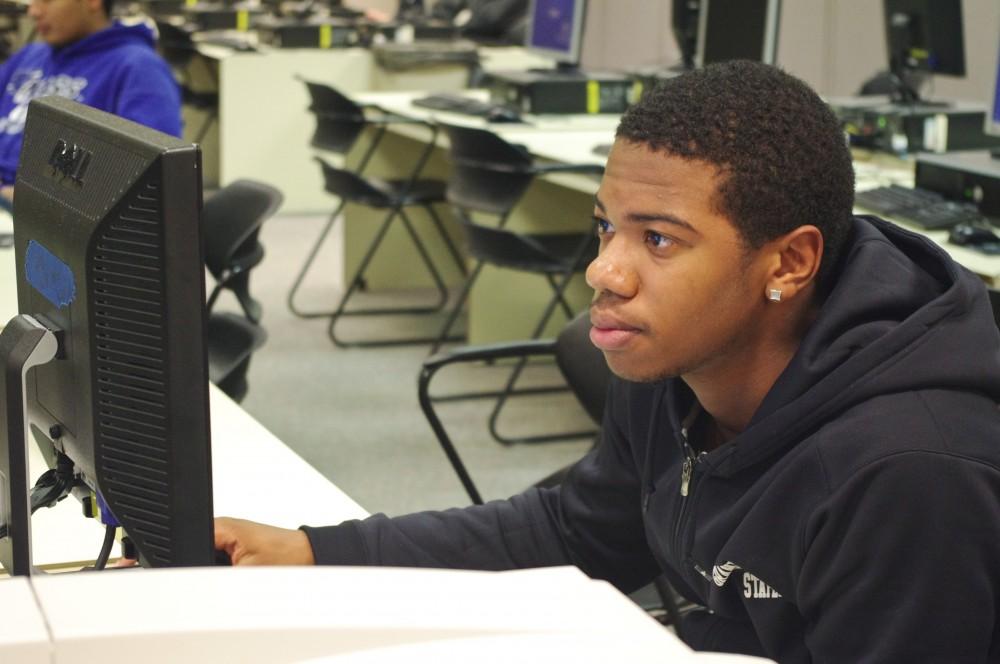Less take 16 credits after change

GVL / Amalia Heichelbech GVSU student DeVaughn Gist accesses MyBanner in the computer labs
Oct 3, 2011
Last year, Grand Valley State University reduced its tuition block to a maximum of 15 credits in an effort to generate $3 million for the university and limit tuition increases during the 2011-2012 academic year.
Prior to Fall 2011, the block tuition rate allowed students to take 12 to 16 credits, but this year it only permits students to take 12 to 15 credits.
While the reduction is producing money for GVSU and keeping tuition hikes at bay for students taking less than 16 credits, it has caused students who want to take more than 16 credits to pay a fee of $412 to $609 for each credit that exceeds the block rate.
Initially, certain academic departments expressed concern that lowering the tuition block would impact enrollment in some courses. In particular, majors that offer a variety of one-credit physical activity classes as well as majors that require four-credit laboratory courses are affected.
“My fear is that there are a number of students who may want a way to remain active and learn a new lifelong fitness skill but may not have the means to do it,” said Brian Hatzel, the head of the GVSU Movement Science department.
According to the Office of Institutional Analysis, there has been a 5.88-percent decrease in the number of undergraduate students taking 16 or more credits this semester compared to Fall 2010.
Hatzel said there has been a slight drop in the number of students enrolled in some of the movement science courses this year compared to last year, but it is impossible to say whether the decrease is solely because of the tuition block change.
Reducing the tuition block has made students more aware of their academic road map, in terms of scheduling courses and paying close attention to how many credits they should take each semester.
“Well, the change has made it pretty hard for me to finish in four years without it costing me extra each year,” said sophomore art major Chris Smyka. “Before the change it was hard for art majors, including myself, to finish in four years and now it’s just that much harder.”
Joe Godwin, associate vice president for academic affairs, said since the new tuition block has taken effect there has been no change in curriculums and he hopes academic advisers are not changing scheduling.
Additionally, Godwin is optimistic that lowering the tuition block rate will not prevent students from graduating in a timely manner. Economically, pushing graduation back would not be a good thing to do since tuition is not the only cost that comes along with attending school, he said.
“The lowest cost education is the one that’s done the quickest,” said Godwin. “I think students would be wise to still take all the classes that they can and still perform at a level that they are comfortable with. [It] is a matter of people wanting to make use of the time that’s available to them to move toward graduation, and they should.”





















